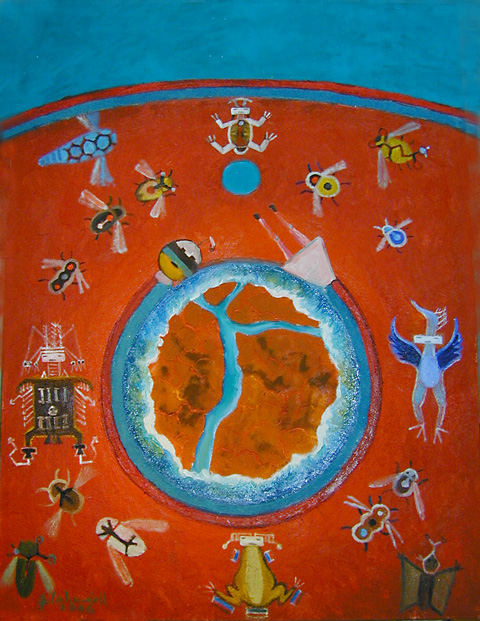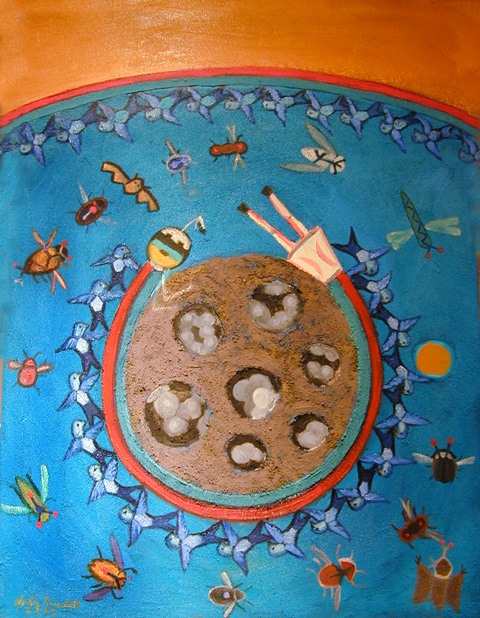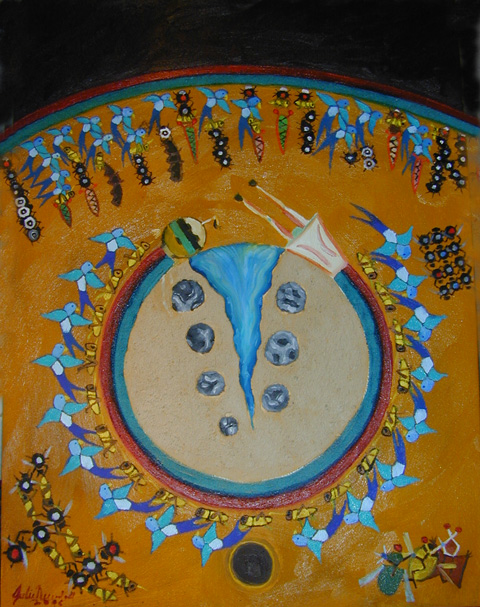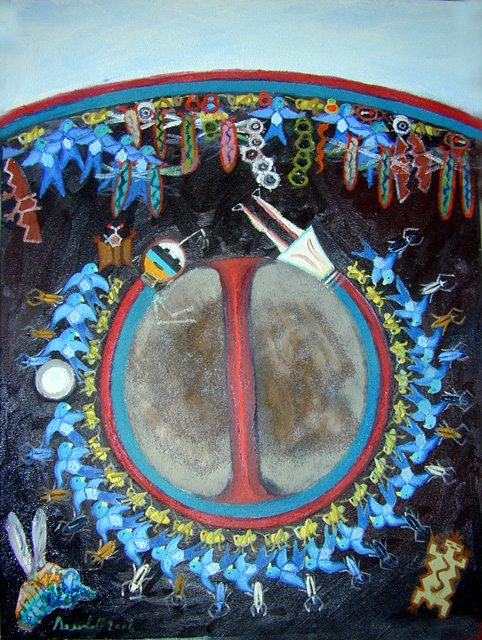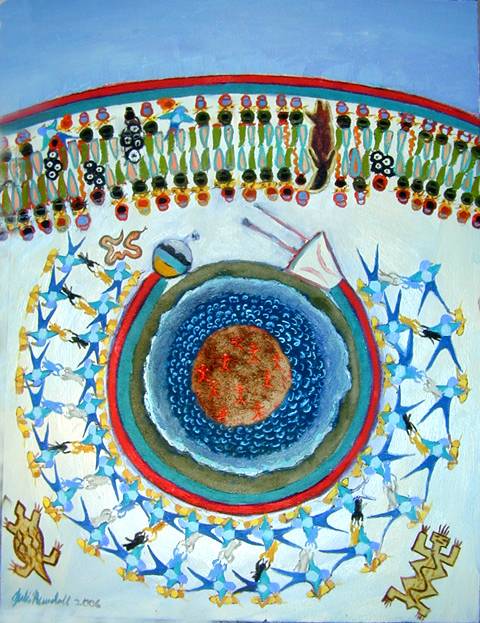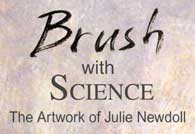

 View Portfolio |
 Inside Time |
 Shows |
 About/Contact the Artist |
.EmergenceThe beginning of the Dine' (Navajo) Creation story juxtaposed with current scientific thought on the origin of life.
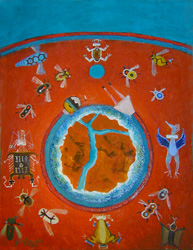 |
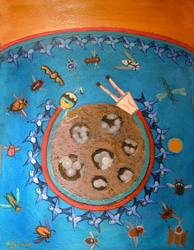 |
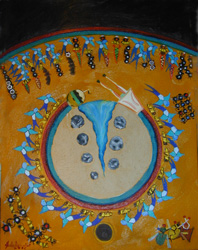 |
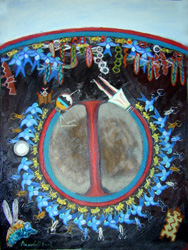 |
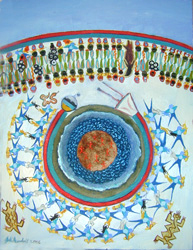 |
| The Dine' (once called Navajo, they prefer the term Dine') Creation story lends itself well to an evolutionary perspective on the origin of life, where everything did not appear fully formed all at once, but started out smaller, less complex and less well-behaved. Gradually things refined themselves into what we are now. The first beings, according to their beliefs, were called Air Spirit People, and were essentially insects. They started out in a place called the "Red World". From here, they moved on to the Blue World, where they met up with slightly more advanced beings, such as the Blue Swallow People. From here, they went to a Yellow World, then a Black and White World, and finally the sparkling world that we now live in. In each world, the Air Spirit learn how to behave a little better, are joined by more complex beings, and finally early human types. Only in the last, fifth world do humans become fully formed, and the rest of their stories can then continue with the new people on earth. Current thinking on the Origin of Life talks about different worlds, also. The most famous is RNA world, just before our current DNA world, where RNA was keeper of all the information as well as doing the work of proteins. RNA world is reflected in the black and white, fourth world, in this series. Before this came Polymer World, simple polymers that must have lead up to the more sophisticated RNA molecules. Before this came Sugar World, according to scientist Arthur Weber of the SETI Institute, who generously consulted with the artist on this series. He informed me that sugars generate autocatalytic products that have the ability to make more of themselves once you have one. In his view, sugars comprised the first microcontainers in which the chemistry of life could take place. For this reason, life today continues to rely on sugars as our energy source. We also have a lot of sugars in our chemical makeup. The evolution of the genetic material can be seen around the central sphere, while the evolution of the container or membrane later on can be seen up at the interface to the worlds to come under the arch. Scientist Robert Stroud of UCSF kindly provided information on thoughts about the evolution of membranes and the emergence of proteins. These paintings can not be fully understood without reading a portion of Paul Zolbrod’s translation of the Dine’ creation story, Diné Bahanè. The wisdom and insightfulness of the Dine’, their creativity and imagination, make Diné Bahanè a timeless story well worth reading. These paintings about the first section, titled Emergence. A point of interest for these paintings is that dirt collected from the Southwest desert regions, around where the Dine' once thrived and still live but not taken from their land, is used for the central spheres. The artist collected this dirt years ago on a trip through the desert, intrigued by the variety of natural colors she found. Dine' dry painting (or sand painting) artists go up into the hills to their own secret places to gather colored earth and stone to grind for their creations. $3,000 each so $15,000 for the series. A portion of the profits from any sale of these works will be contributed to a Dine' organization to be selected by the buyer. The translation used for this series comes from the most recent "Dine' bahane'; The Navajo Creation Story" by Paul G. Zolbrod, University of New Mexico Press, 1984, ISBN 0-8263-1043-5. The paper on Sugar world , and much verbal communication, is from Arthur L. Weber. His paper on the topic is "Growth of Organic Microspherules in Sugar-Ammonia Reactions", Origins of Life and Evolution of Biospheres (2005) 35:523-536. |
